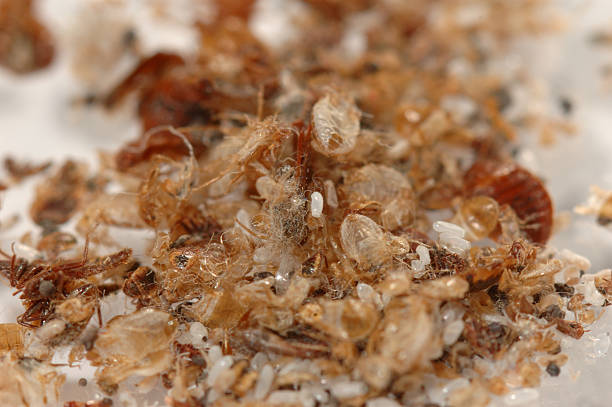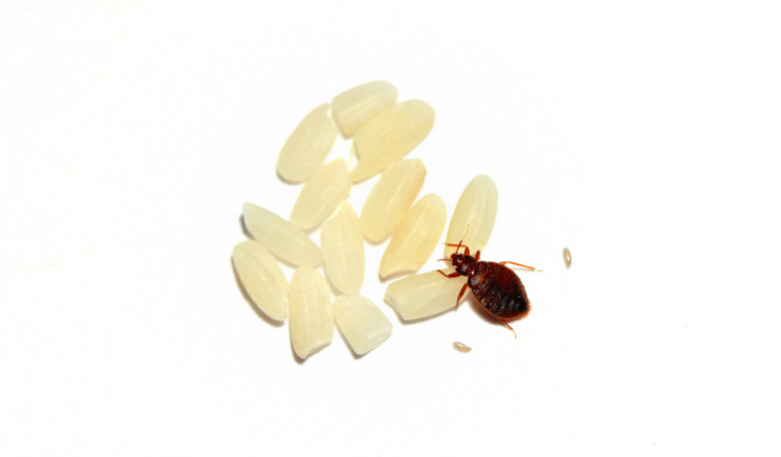What You Need To Know About Bed Bug Shells
When we think about bed bugs, many of us probably think about a live bug moving around our living spaces and taking up residence in our beds. While knowing the life cycle of a bed bug can be helpful when trying to eliminate them from your home, it is also good to know about bed bug shells, skins, or casings.
It is not always possible to spot live bed bugs until the infestation has grown out of control, so early warning signs such as bed bug shedding are a reliable indicator that you have a pest problem. You will need to know what to look out for since the shedding is easy to miss.
The more information you learn about something, the better and discussing the bed bug exoskeleton is not meant to make your skin crawl even but instead, give you a better understanding of bed bugs in general.

What Are Bed Bug Shells & Casings?
Bed bug shells or casings are the same, but sometimes mentioned as one or another. Since bed bugs are an insect, they have a skeleton (or exoskeleton) on the outside of their body, and like all insects, a bed bug must shed its skin to grow. The bed bug exoskeleton that has been shed is often known as a shell or casing.
Before getting into bed bug shells and casings, let’s first know the life cycle of a bed bug. After mating, females lay their eggs into small spaces. The eggs hatch in about six to ten days and the bed bug egg becomes a nymph. When the eggs hatch, they leave behind empty egg casings.

When the nymph emerges from its egg, it seeks its first blood meal. A nymph must go through five stages before becoming an adult, it will have to molt (or shed its exoskeleton) five times. Each time a nymph sheds its shell and leaves behind a casing, it can enter the next stage of life.

The size of the shells or casings may vary, many people think that adult bed bugs shed their exoskeleton. That couldn’t be further from the truth. Any casings you come across belong to the eggs or a nymph at various stages. Once a bed bug has reached adulthood, it no longer sheds or grows.
What Do Bed Bug Shells Look Like?
You may be wondering what a bed bug shell or casing looks like and for the most part, they look just like a bed bug but without the body on the inside. Many shells are intact or undamaged, and it appears as though the nymph magically disappeared from its exoskeleton.
First, we have to know what a bed bug looks like? Many think they know what they look like but end up mistaking it for other bugs, like carpet beetles. Since proper identification is essential, we need to know how to identify a bed bug at its various stages properly.
The type of shell or casing find will depend on which stage the nymph was in as it emerged from its shell. Nymphs have the same characteristics of adult bed bugs, but the main differences between adults and babies are the color and size.
Adults have a brown exoskeleton while nymphs have lighter colored shells which often appear as translucent, whitish-yellow, or a lighter shade of brown. Bed bugs have “true bug” characteristics which include antennas, segmented bodies, and six legs. The various sizes of nymph shells are roughly as follows:
Bed beg egg casting: 1 mm
First stage nymph is 1.5 mm
Second stage nymph is 2 mm (size of a pinhead)
Third stage nymph is 2.5 mm
Fourth stage nymph is 3 mm
Fifth stage is 4.5 mm
Although for the most part, you’re likely to see shells of nymphs, you may come across some bed bug egg casings. Bed bug eggs are only about 1/16 inches in length, are oval-shaped, are white, and may resemble other insect egg sacs. If you’re not sure of what you are seeing, a quick search at this post can be helpful.

Where Are Bed Bug Casings Found?
The bigger the Bed Bug infestation is, the more casings you will find lying around. Most molted casings are in areas where bed bugs gather together in groups. Given that bed bugs are more likely to group together than go out on their own, casings may be anywhere throughout your living space.
Bed bugs like to stay close to where their host sleeps, you will probably find more casings in and around your bed, such as along the mattress seams and behind the headboard.
Other common places to find a variety of sizes of bed bug casings are in areas where the ceiling and wall meet, along baseboards and also in air conditioners and furniture. You may also find them on personal belongings like clothes, especially if you are always leaving items strewn across the floor.







